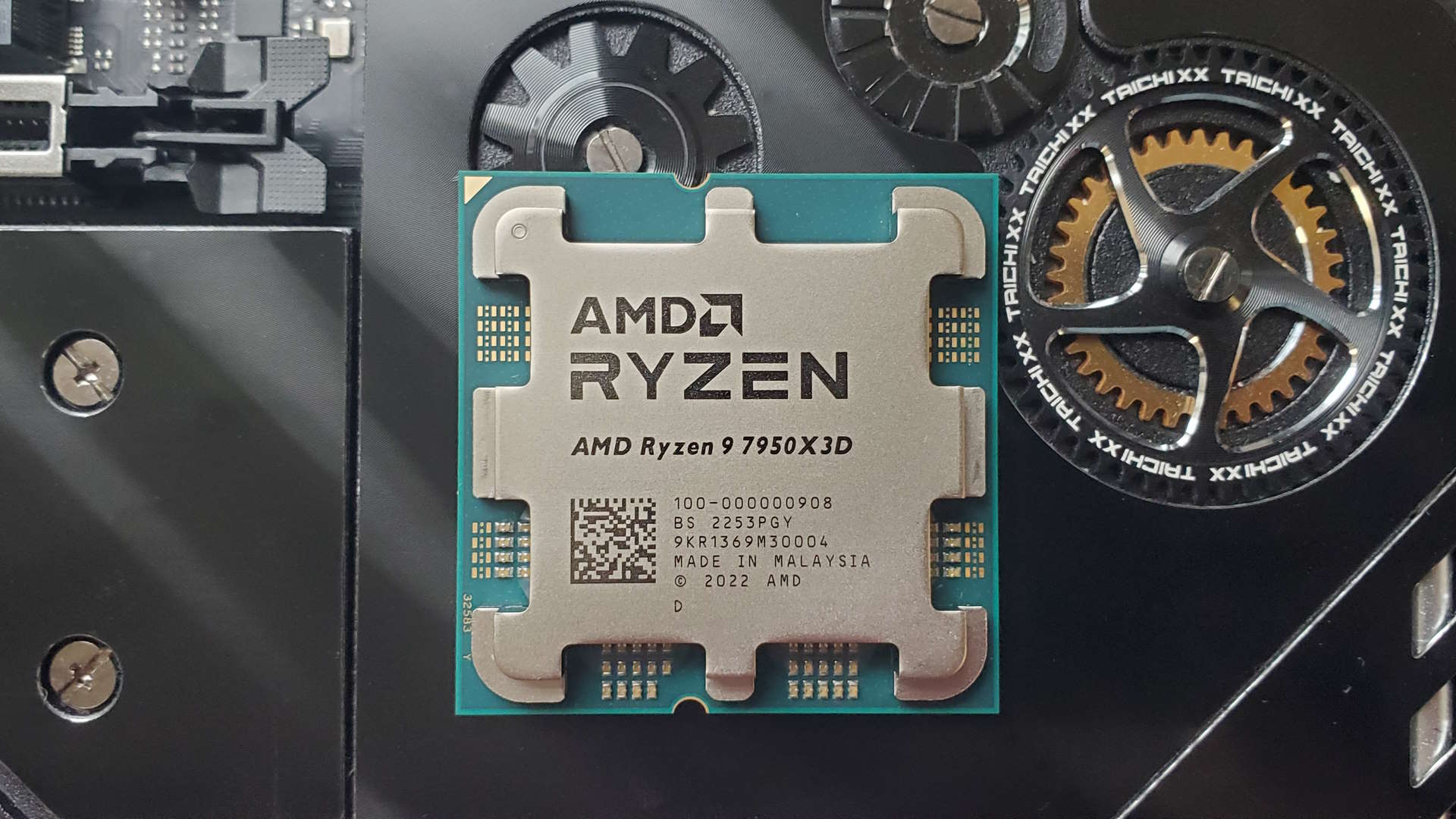Our Verdict
The new AMD chip is a smart design backed up with some choice gaming performance numbers. It's the CPU I'd want to pair with an RTX 4090 today to know I was getting the most out of my GPU silicon, and for me that makes it the best gaming CPU around today. Though that might change when I get to test the rest of the X3D range...
For
- Tangible gaming performance lead
- Remarkable efficiency
Against
- Lower raw CPU performance
- Costly compared to the competition...
- ...and AMD's other X3D chips
PC Gamer's got your back
AMD Ryzen 9 7950X3D review
AMD's bold attempt to create a processor that can be at once the ultimate gaming and productivity chip has almost worked. It's once again proven the power of AMD's 3D V-cache technology when it comes to squeezing higher gaming performance out of its processors, and has married that to an asymmetrical chiplet layout which promises to deliver the goods when it comes to creative applications, too.
just about the best gaming CPU on the market, even if that moniker retains some questionable real-world relevance.
But the end result isn't quite the AMD line of "one processor can do it all." The Ryzen 9 7950X3D is an expensive gaming processor that falls just a little short of its now-cheaper 16-core forebear when it comes to specifically CPU-intensive tasks even if it can demonstrably top it in the gaming frame rate stakes.
As a high-end gaming processor, though, it's a win in both raw performance and in efficiency. The 7950X3D doesn't consume anywhere near the same amount of power as its non-cached Zen 4 7950X sibling, or the super thirsty Intel Raptor Lake chips, and smashes both it and the Intel Core i9 13900K when it comes to frame rate per watt.
Its gaming prowess, and the efficacy of that 3D V-cache tech, is highlighted at lower resolutions, but it's not just at 1080p and below where you'll see the difference. Even strapped to an Nvidia RTX 4090 the Ryzen 9 7950X3D is able to encourage higher frame rates from the system as a whole compared to either AMD or Intel rivals at top 1440p settings as well.
At 4K, however, the upper echelons of gaming where such a high-end rig will largely reside, there is little difference between this new AMD chip and Intel's i9 13900K. That's at a point where the onus is almost entirely on the graphics card to deliver. But it's enough to know that, of all the CPUs around today, this is the one most likely to deliver the best performance from an expensive graphics card.
In the end the AMD Ryzen 9 7950X3D is just about the best gaming CPU on the market, even if that moniker retains some questionable real-world relevance. There are two other X3D chips coming from AMD; a similarly asymmetrical Ryzen 9 7900X3D and a single chiplet Ryzen 7 7800X3D. Both will deliver the extra 3D V-cache gaming performance, and likely with the same efficiency increase, but for a lower price. That makes this $699 processor of maybe rather niche interest, with slightly compromised raw CPU performance outside of games.
AMD Ryzen 9 7950X3D specs and architecture

Cores: 16
Threads: 32
Socket: AMD AM5
CCD lithography: TSMC 5nm
CCD die size: 70mm²
CCD transistor count: 6.5 billion
IOD lithography: TSMC 6nm
IOD die size: 122mm²
IOD transistor count: 3.4 billion
Max boost clock: 5.7GHz
Base clock: 4.2GHz
L2 cache: 16MB
L3 cache: 128MB (inc. 64MB L3D)
Memory support: DDR5-5200 (non-OC)
TDP: 120W
Price: $699
The new 7950X3D is the perfect example of what AMD is trying to achieve with this spin of its 3D V-cache technology. In the previous Zen 3 generation of chips it produced a single SKU—the Ryzen 7 5800X3D—which utilised a single eight-core chiplet with the extra vertically stacked cache sat atop it.
Because of that it needed to limit the power and the clock speed of the compute die. When you've got a chunk of extra silicon bonded to a Zen chiplet, a chiplet that has been thinned down to still conform to the standard height of the package, you can't quite ride it so hard to get to its final performance numbers.
It's the same situation here, with the 7950X3D. Again, AMD is bonding an extra 64MB of L3 cache to an eight-core chiplet (this time a Zen 4 one) to double its last-level cache, for a total of 128MB. And it has to limit the clock speed of that chiplet, too, as it's even more important that it's the same height as a standard Ryzen 7000-series CPU.
Because this time there are two chiplets in the package. But AMD has taken the smart move of limiting the 3D V-cache to just one of them, leaving the second in exactly the same state as it is on the standard Ryzen 9 7950X. It's smart because it's cheaper to do, but also means that it can have one side of the CPU with eight Zen 4 cores that can operate best for applications that benefit most from low latency memory, and another eight cores that will run at a peak clock speed frequency the others can't manage.
So, the stacked chiplet becomes the best option for games, and the standard chiplet then is the focus for productivity apps that just want raw processing grunt. Though that all depends on the software.
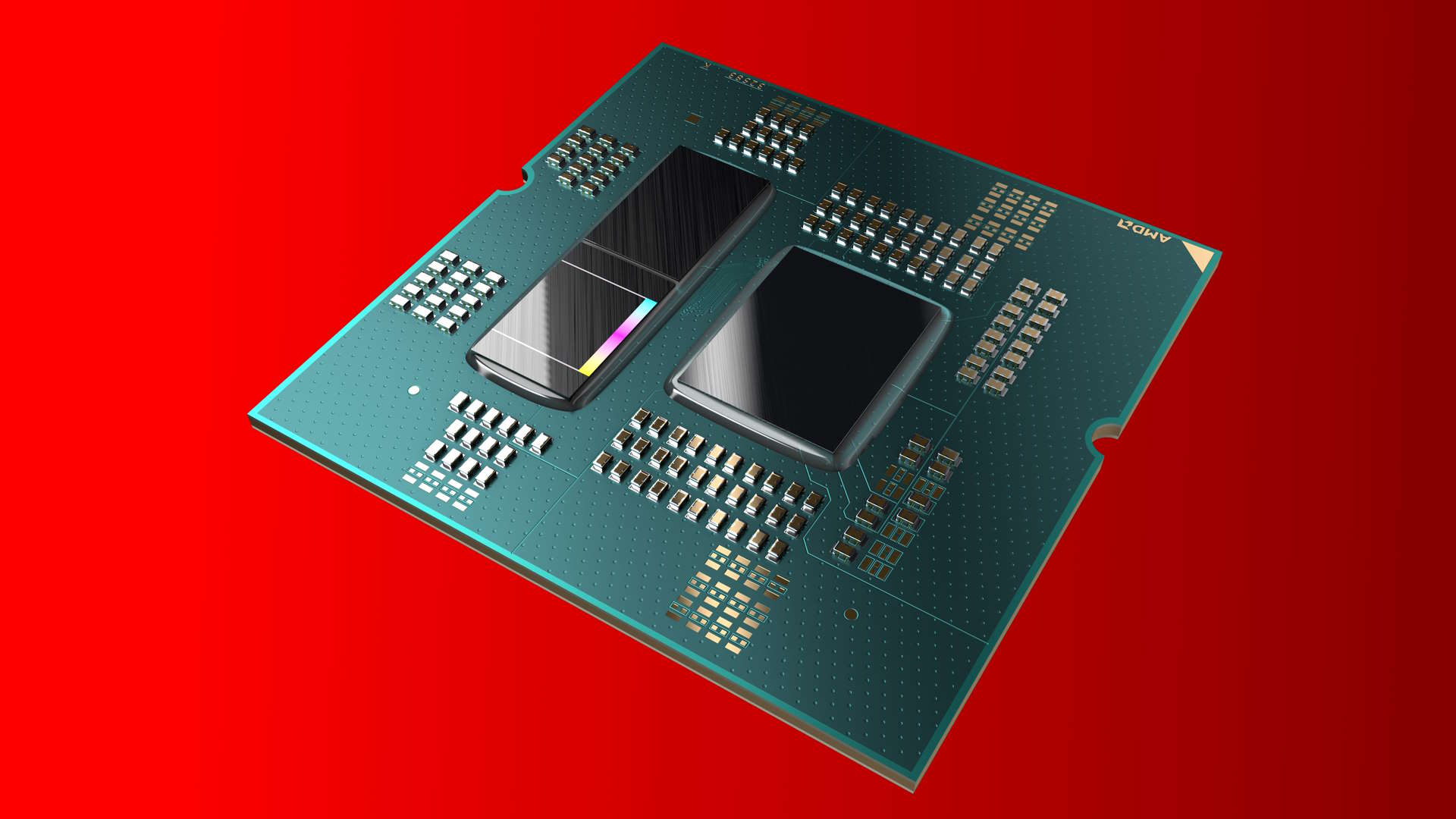
Intel can do it for the hybrid cores inside its Alder Lake and Raptor Lake CPU designs, and AMD has been working hard to make it work for its latest X3D chips. To that end AMD's got its 3D V-cache Performance Optimizer and PPM Provisioning File drivers in its latest chipset software package. The first works in realtime to modify which preferred cores Windows can see, highlighting either the standard die or the 3D V-cache chiplet depending on the workload it detects.
The PPM Provisioning File driver will then park the second chiplet when it detects a game being run, and restricts it to the one with higher gaming performance—which AMD claims is "almost always the CCX with the larger cache." The action of parking the unused chiplet is supposed to lower latency and therefore increase frame rates alongside the Performance Optimizer.
If the software detects a certain high level of thread utilisation, however, it will spin up that dormant chiplet and bring it online if its extra core count is needed.
Otherwise, the Ryzen 9 7950X3D is practically identical to the 7950X's specs and architecture. It's still a 16-core processor, with a total of 32-threads. The lower clock speed resulting from the use of the stacked cache is nominally restricted to the base clock where it's rated at 4.2GHz instead of 4.5GHz, leaving the maximum boost clock at the same 5.7GHz peak as the older chip. That's because, while the 3D V-cache CCX won't run at that frequency, the standard chiplet will still reach that level.
It retains the same DDR5 support, the same 5nm lithography for its compute dies and the same 6nm I/O die, and the same $699 MSRP, too. The pricing for the standard Zen 4 has dropped quite drastically since launch, however, so the straight 7950X is now retailing for more than $100 less than that original MSRP.
The final thing to note about the newer Ryzen 7000-series chips is their lower TDP. They're rated at 120W as opposed to 170W, and are far more efficient in operation than the Zen 4 vanguard, as you'll see below.
AMD Ryzen 9 7950X3D benchmarks & performance

From all the promotional material, the gaming performance of AMD's top Zen 4 processor is exactly what I'd hope. It is demonstrably quicker in terms of standard gaming frame rates compared with both the original 7950X and Intel's rival Core i9 13900K. It's consistently faster across the board, even in titles where Intel's chip previously held sway over AMD processors.
The gaming lead looks even more impressive when you come to look at the performance per watt and the heat it generates. Taking our standard Far Cry 6 benchmark for the frame rates per watt metric, the 7950X3D is 86% more efficient that the previous top AMD processor and 54% more efficient than the 13900K.
That bodes well for building specifically quiet or small form factor gaming rigs.
Gaming performance
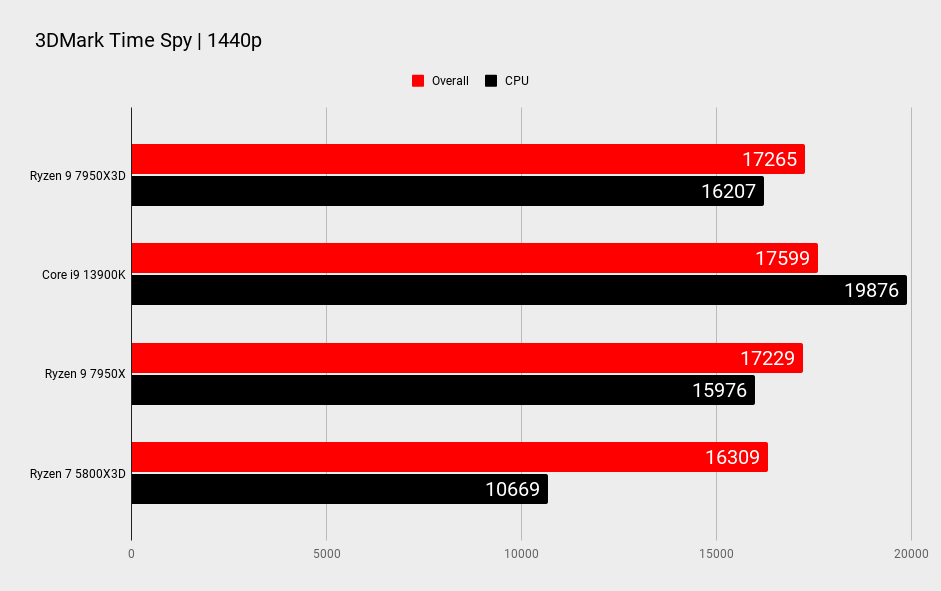
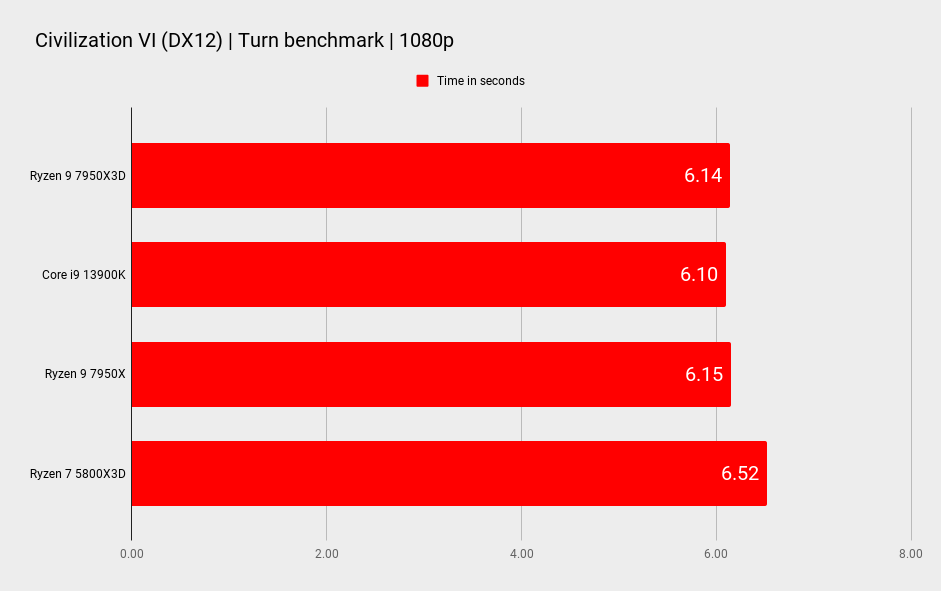


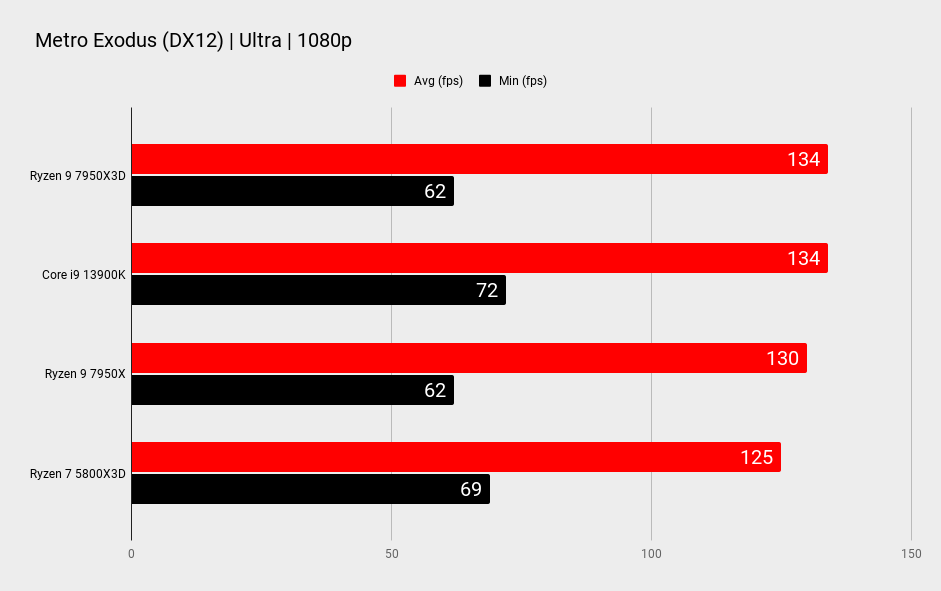

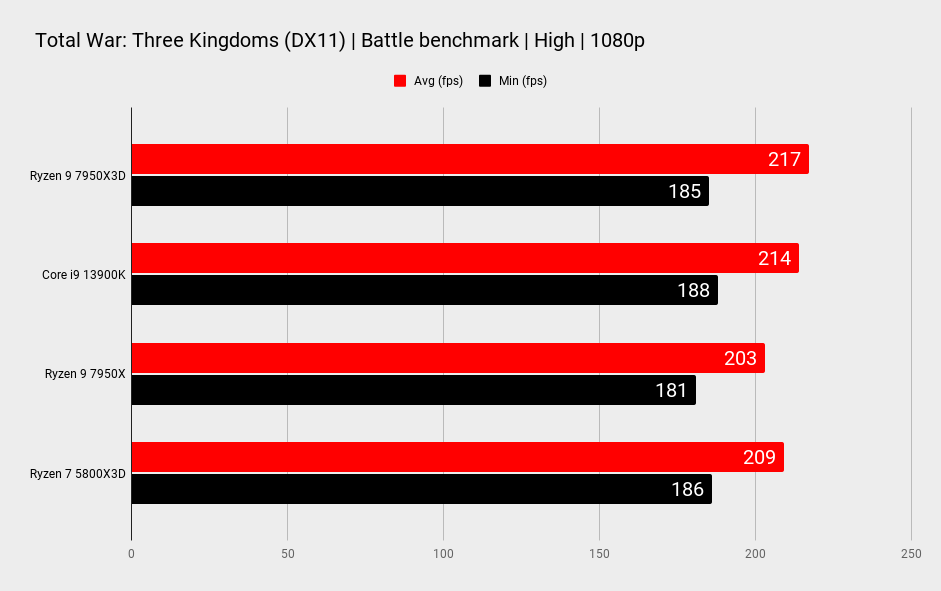
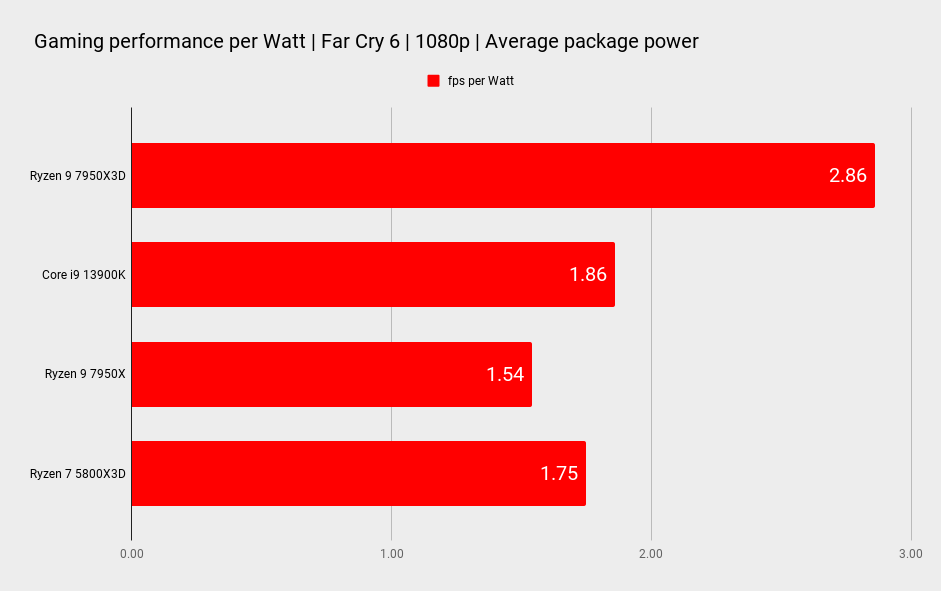
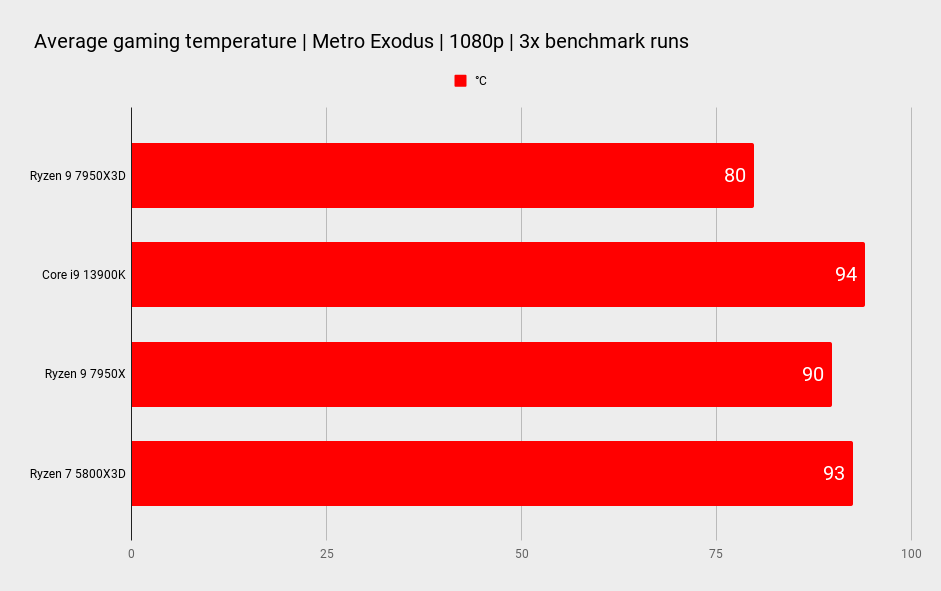
The compromise of that asymmetrical chiplet design, however, become obvious when you start to look at the raw CPU performance in more dedicated productivity tasks. Looking at the rendering benchmarks it's regularly behind both competing chips. However, the efficiency gains are clear even when you're maxing out the traditional CPU cores.
System performance



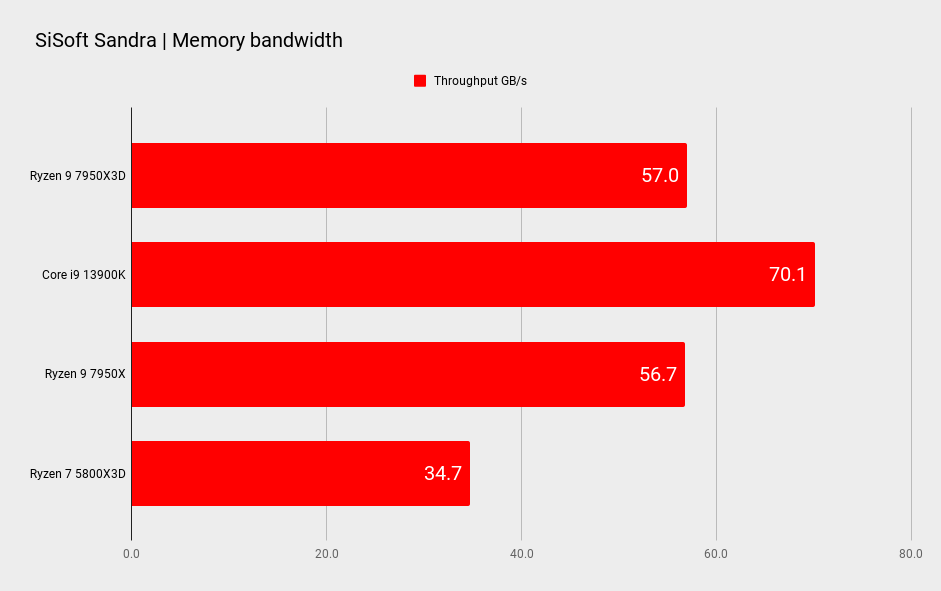
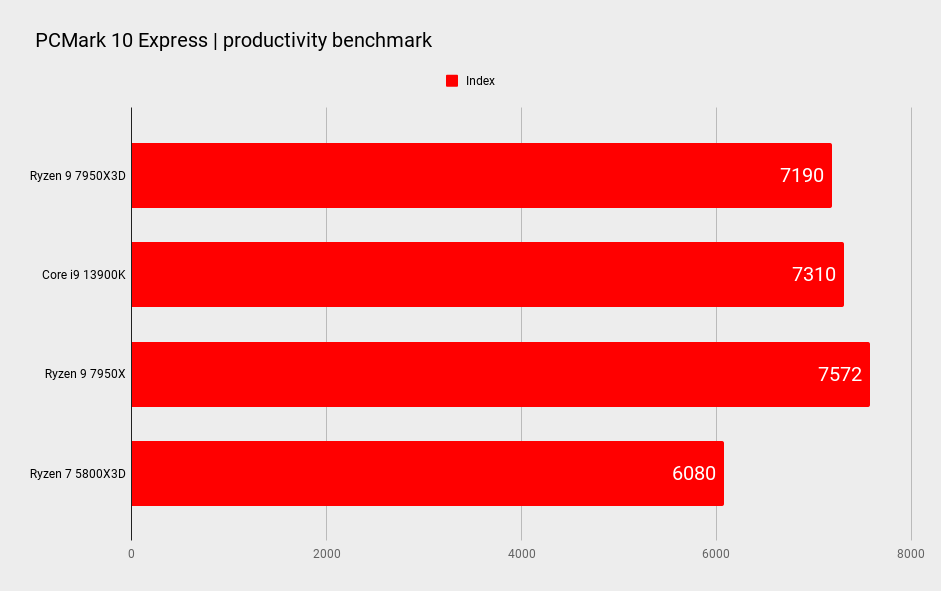
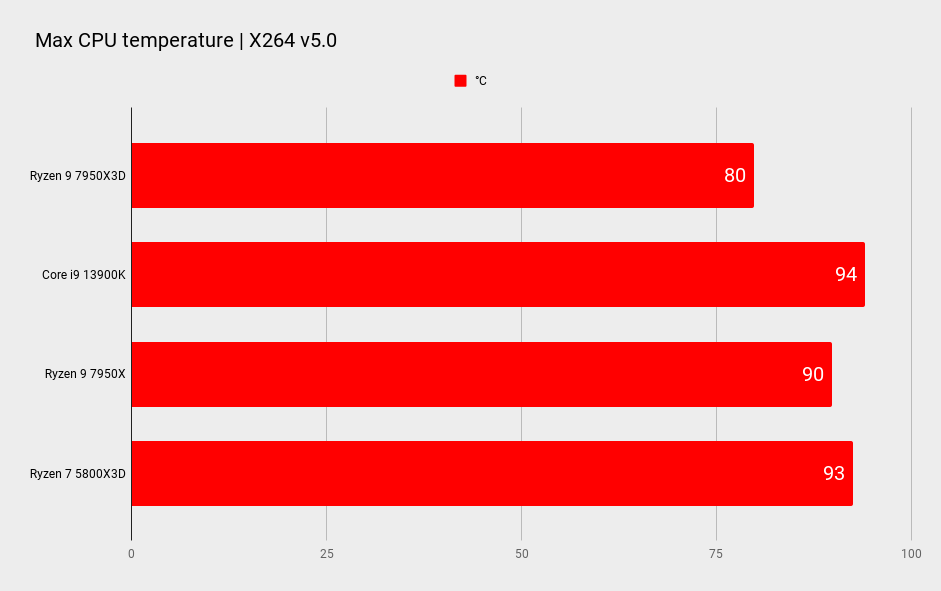
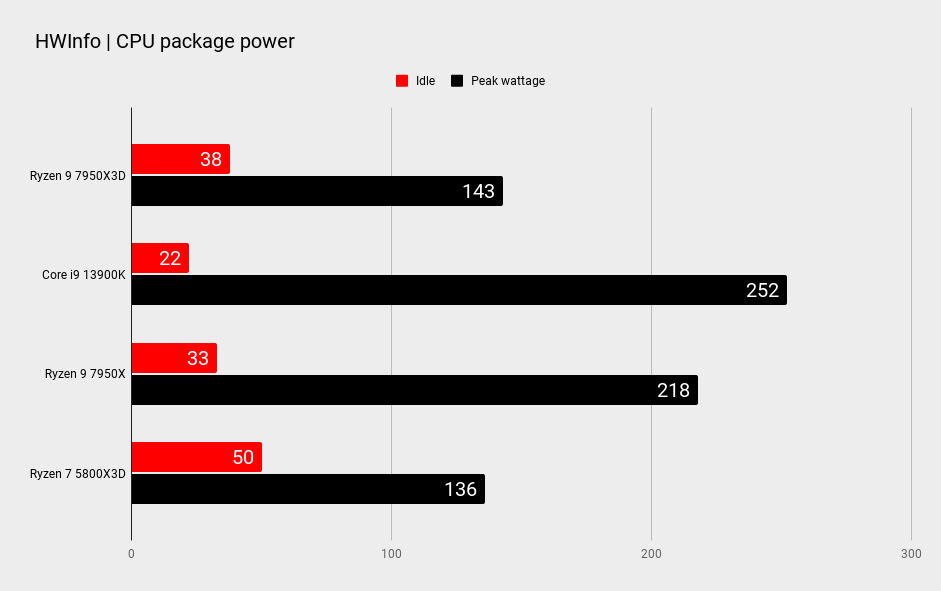
If we're talking about this being AMD's take on the perfect gaming processor, we need to step outside of the 1080p gaming environment. We traditionally test at this lower resolution for our CPU game benchmarking so we are able to highlight the difference in performance down to the actual processors. As you go higher in the resolution scale you end up relying ever more on the power of the graphics card, to the point where you cease being able to discern meaningful performance deltas between chip architectures.
With the top GPU of today, however, we've seen times where the power of the RTX 4090 has been bottlenecked by even the most powerful processors around. So where our standard results have been run with an RTX 3080 for historically relevant benchmark numbers, I've also put the Ryzen 9 7950X3D, 7950X, and Core i9 13900K through a few high-end gaming benchmarks to see how they'd fare in a real-world use case in a high-end rig.
I've picked Cyberpunk 2077 as a historically GPU-bound benchmark, Far Cry 6 and Metro Exodus Enhanced Edition as ones that are regularly CPU-bound, and Tiny Tina's Wonderland as a game where frame rates ought to just fly.
High-end real-world gaming performance
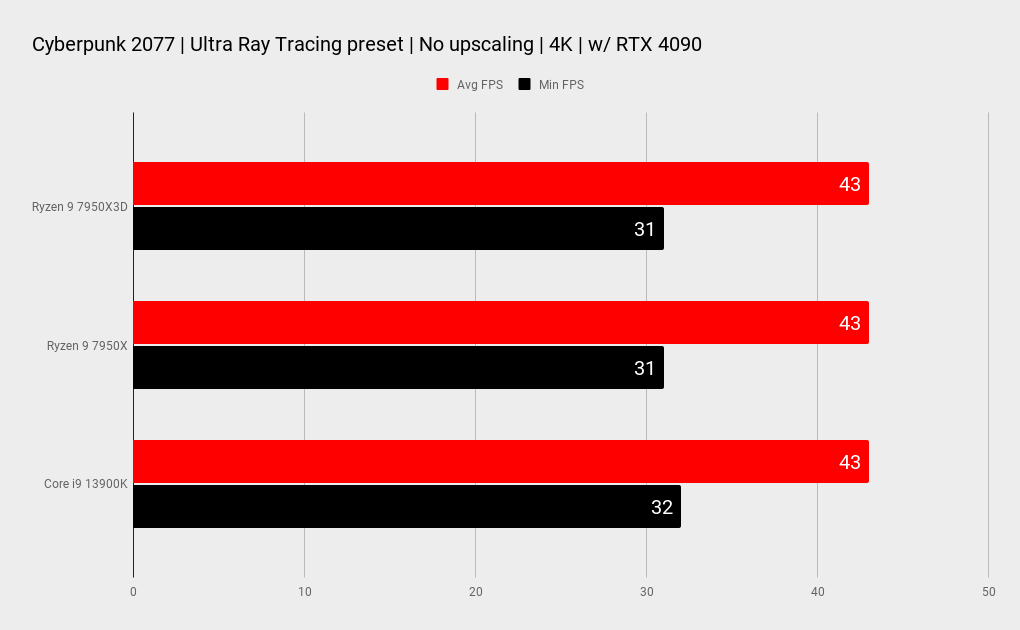
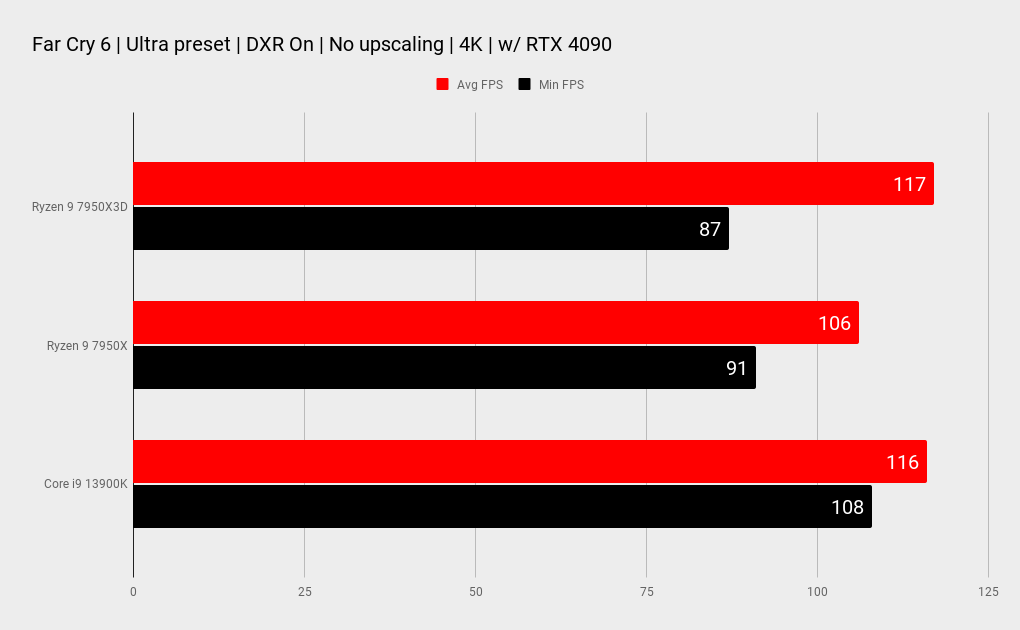
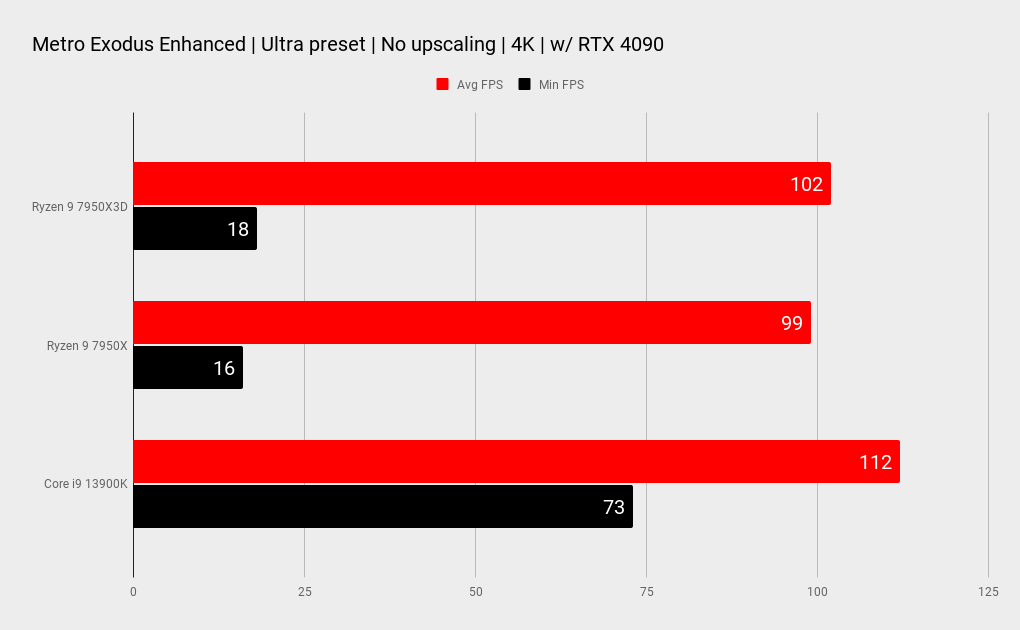

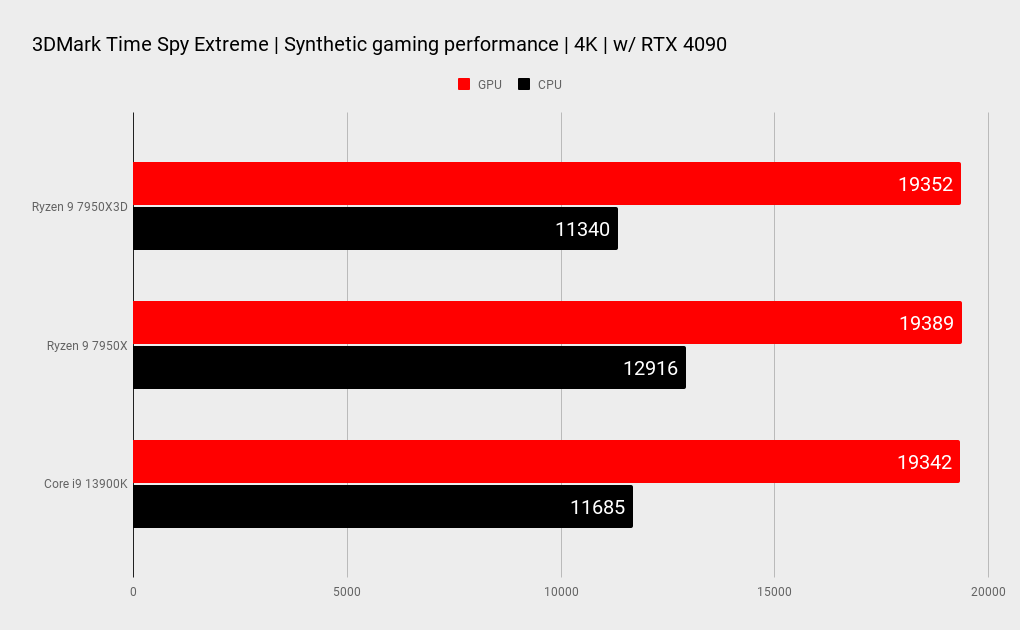

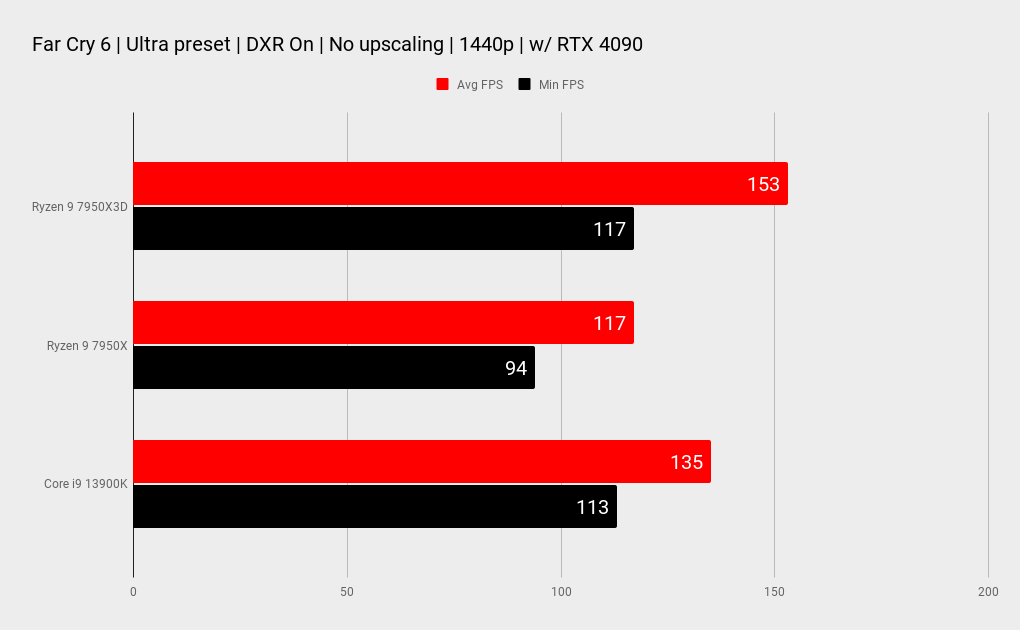
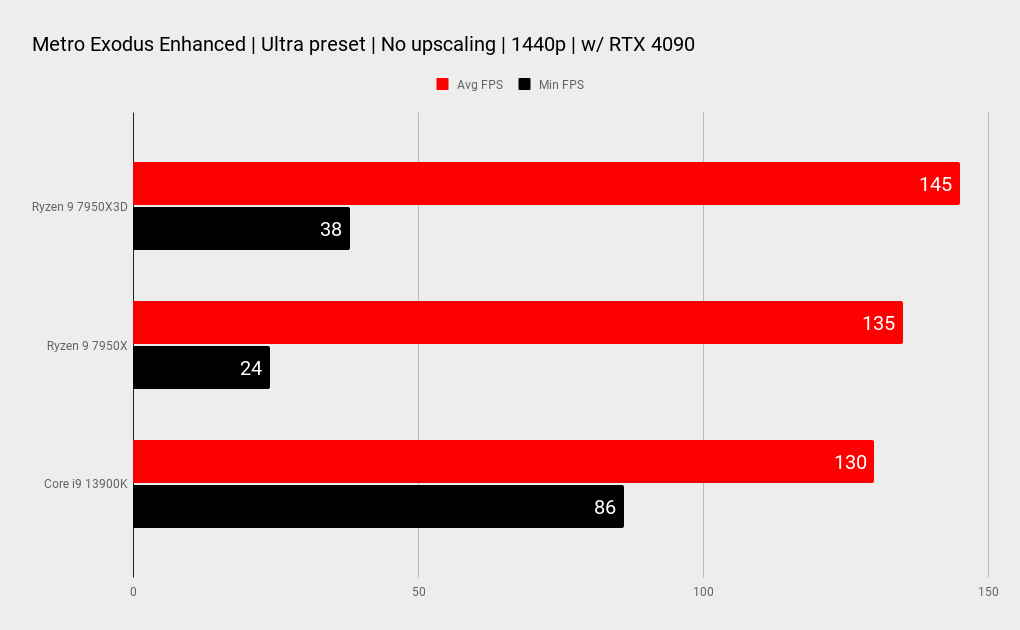


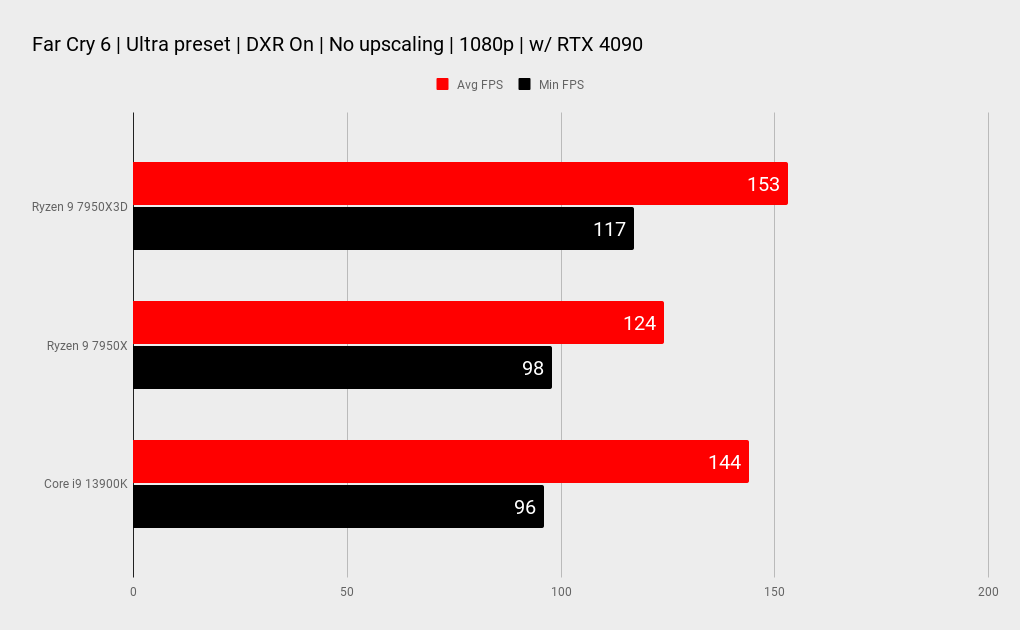

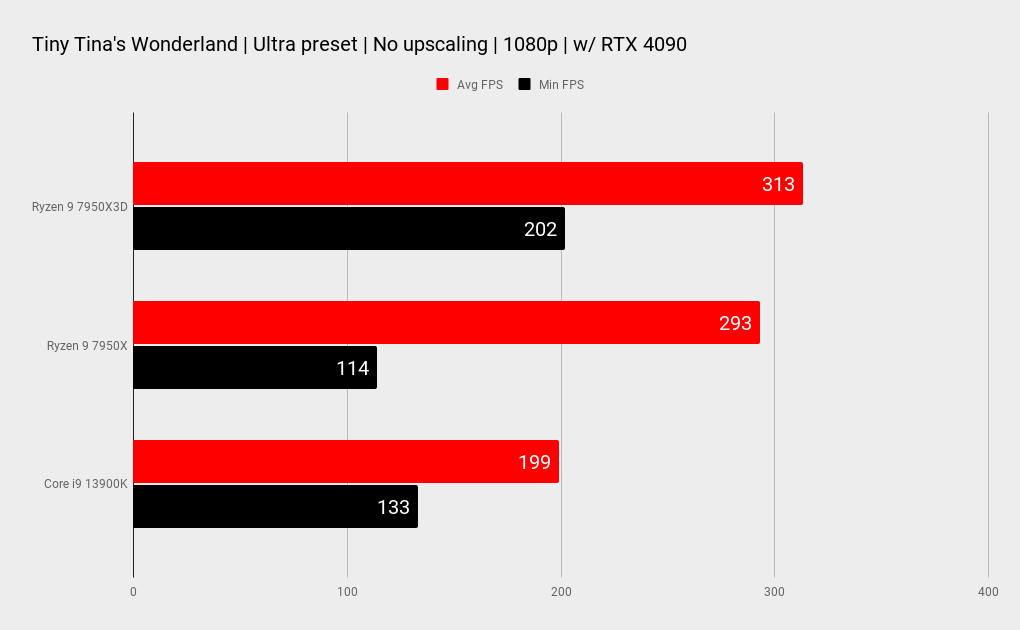
AMD
Motherboard: ASRock X670E Taichi
Memory: G.Skill Trident Z5 Neo DDR5-6000 CL30 2x 16GB
Intel
Motherboard: Asus ROG Z690 Hero
Memory: G.Skill Trident Z5 RGB DDR5-5600 CL36 2x 16GB
Graphics card: Nvidia RTX 3080 10GB | RTX 4090 FE
Storage: 2TB Corsair MP600 Pro XT | 1TB WD Black SN850
Cooler: Corsair H100i RGB
PSU: NZXT 850W
Chassis: DimasTech Mini V2
And this test highlights that even at 1440p the extra L3 cache of the 7950X3D tangibly makes a difference to the gaming performance of the system at the highest graphical presets. But, as always, at 4K it's all about the GPU. Metro is the only benchmark that displays some difference between the three chips attached to the RTX 4090, and then that's more down to some vagaries in optimisation and drivers.
Looking at the frame times, I can see that the AMD chips are stuttering badly, and that's impacting the final average frame rate numbers. I can't tell whether this is something specifically due to the driver package attached to the 3D V-cache, as it's the same with the non-X3D version running the same chipset drivers. But it's certainly not something that occurs with the Intel chip.
AMD Ryzen 9 7950X3D analysis
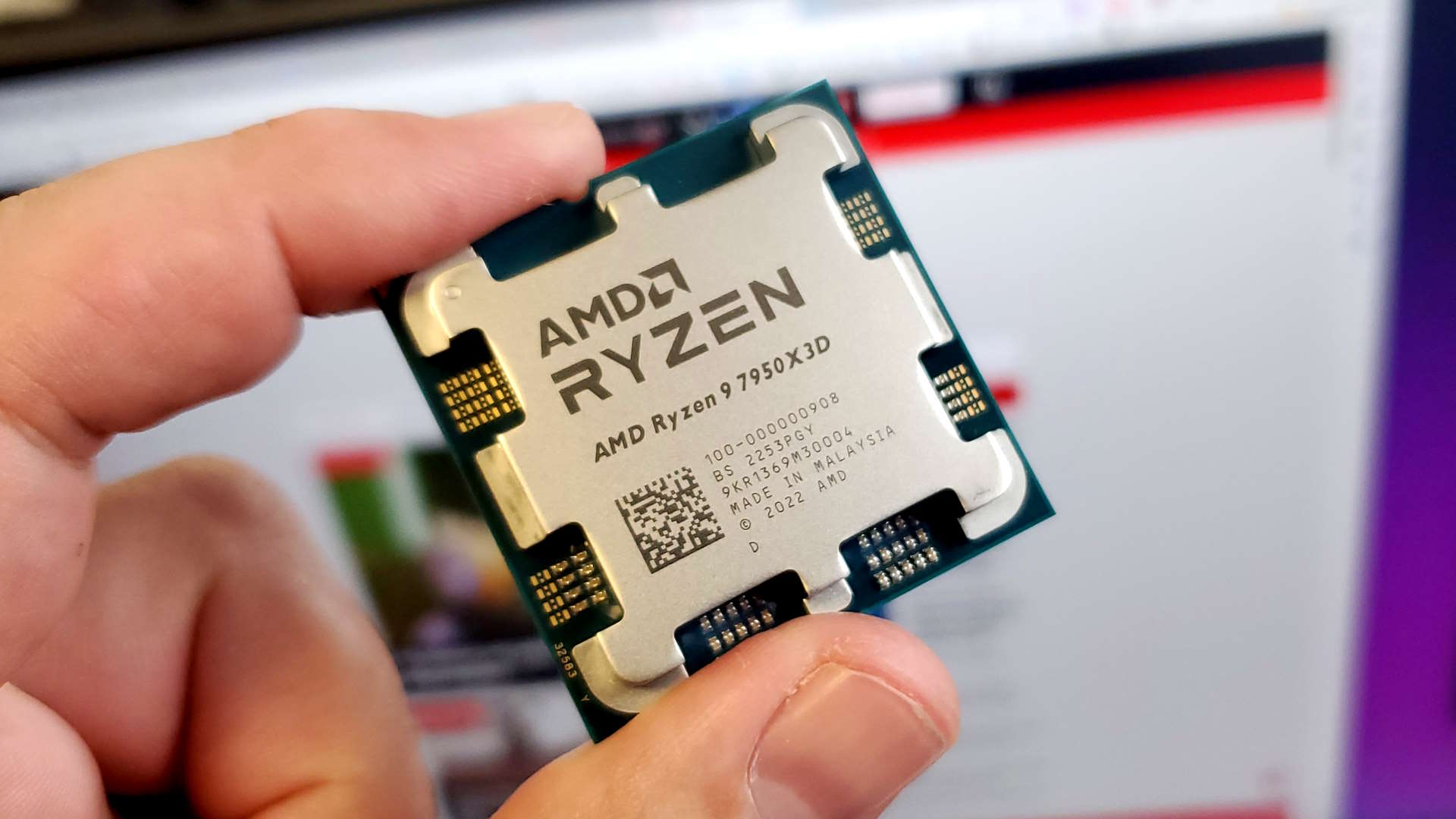
The notion of a high-end gaming CPU is always going to be an ephemeral one. It's often a moniker you can only give out based on gaming frame rates that are more theoretical than real-world; performance numbers based on low-end resolutions you'd never use. But with the AMD Ryzen 9 7950X3D that's more of a tangible title than before, with demonstrable performance leads at 1440p as well as 1080p when the highest graphical presets are engaged.
And that makes this top AMD chip a far more tempting option if you're looking at spending $1,600 on a high-end graphics card. The 7950X3D will give you the absolute best chance at getting the most performance from your expensive GPU, and that's a reassuring place to be as an ultra-enthusiast.
The increased efficiency is likely to be less important for such a human, but the astounding drop in power draw combined with an increase in gaming performance makes this X3D chip look like the sort of processor we should be sticking in our rigs. At a time where top-end CPUs usually come with a commensurate spike in power draw, the energy economy of the new AMD processors is welcome and very impressive.
There is a noted drop in raw processing power as a result of the addition of the gaming focused stacked 3D cache memory chip. Only one of its chiplets can operate at full power, and that means it's not quite the one chip to rule them all when it comes to both gaming and productivity. So, if you're a content creator with a passing interest in gaming, then the standard Ryzen 9 7950X or Intel Core i9 13900K is going to be of more interest to you.
But if it's the other way around, and you're a dedicated gamer with an interest in content creation, the 7950X3D could well be your jam.
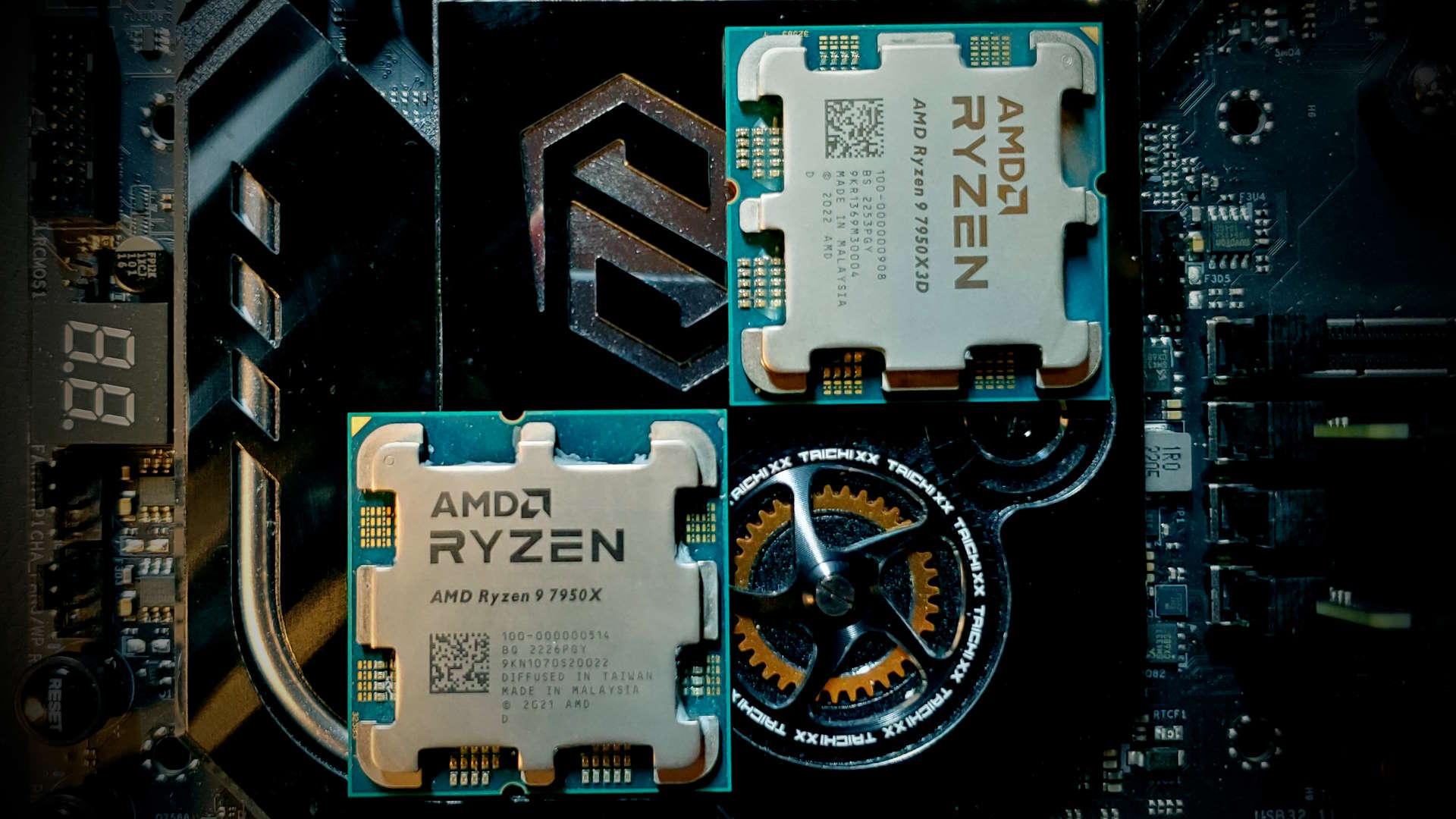
For now, this is the processor I'd want to be pairing with a high-end graphics card purchase.
Or maybe the Ryzen 9 7900X3D or Ryzen 7 7800X3D might be. I've yet to test the other cache-heavy chips, but if they can deliver the same gaming and efficiency uplifts as this one then they're going to make more sense to a PC gamer. The 7900X3D has the same asymmetrical chiplet layout, so has the same compromises for productivity, but the 7800X3D is a pure 3D V-Cache gaming beast. If you ain't rendering in Blender, that's likely to be the best of the bunch for you.
Just don't expect overclocking to come to the rescue if you want to squeeze that little bit of extra productivity performance out of your chip. AMD hasn't entirely killed overclocking, you can still use its Curve Optimizer and Precision Boost features, but direct overclocking is nixed.
Though I personally didn't have a lot of luck pairing the Curve Optimizer and PBO. This is meant to be the one-touch tuning tool to get the most out of your specific chip, and while it got all the way through its hour and half of tuning with a preset I could enable through Ryzen Master it didn't really work out.
The tuned setting did deliver higher performance, but only in the same way you can tune an F1 car to run above tolerances only to explode as it crosses the finish line. I could catch some higher benchmark numbers, but the system was in no way stable.
But still, AMD has shown again the gaming prowess of its stacked cache design, and for now this is the processor I'd want to be pairing with a high-end graphics card purchase. As ever, if you can't make a chip faster or bigger, throw some more cache at it and you'll get better gaming performance. It's the same through CPUs and graphics cards today and ever more. Though, I will admit that Metro Exodus stutter does give me some pause as to how effective AMD's smart chiplet management software will be across the broad swathe of games out there in PC land. And that's something I'm going to want to keep an eye on.
The new AMD chip is a smart design backed up with some choice gaming performance numbers. It's the CPU I'd want to pair with an RTX 4090 today to know I was getting the most out of my GPU silicon, and for me that makes it the best gaming CPU around today. Though that might change when I get to test the rest of the X3D range...

Dave has been gaming since the days of Zaxxon and Lady Bug on the Colecovision, and code books for the Commodore Vic 20 (Death Race 2000!). He built his first gaming PC at the tender age of 16, and finally finished bug-fixing the Cyrix-based system around a year later. When he dropped it out of the window. He first started writing for Official PlayStation Magazine and Xbox World many decades ago, then moved onto PC Format full-time, then PC Gamer, TechRadar, and T3 among others. Now he's back, writing about the nightmarish graphics card market, CPUs with more cores than sense, gaming laptops hotter than the sun, and SSDs more capacious than a Cybertruck.
